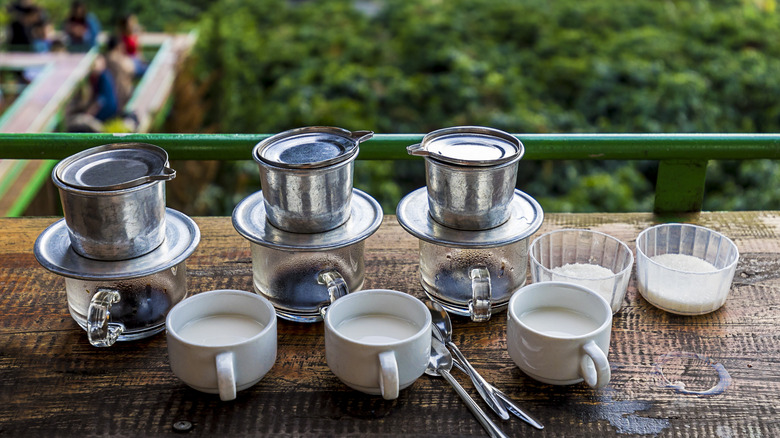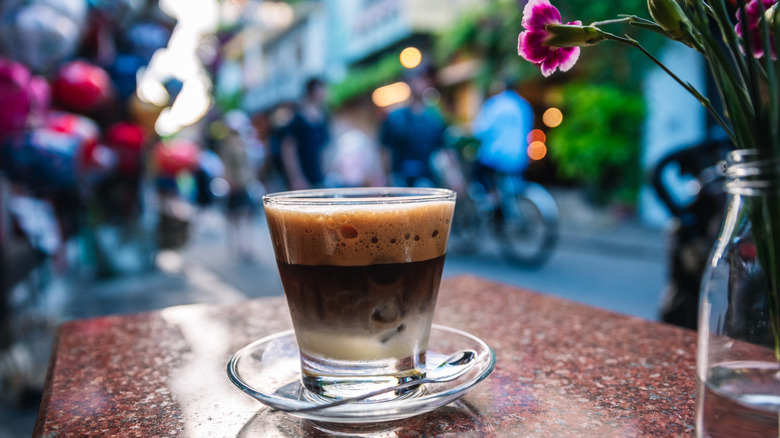What Coffee You Should Drink When Visiting Vietnam
As you wander through the bustling streets of Hanoi or Ho Chi Minh City in Vietnam, scooters whip past you, the sound of honking horns fills the air, and delightful scents of classic Vietnamese culinary treasures like pho make it tempting to stop in every restaurant you walk past. If the tropical humidity causes a drop or two of sweat to form on your brow, duck into a café or street stall for a cold and refreshing pick-me-up — cà phê đá, or Vietnamese iced coffee.
A standard Vietnamese iced coffee is made with beans from the robusta plant, which has a strong flavor and high caffeine content — almost twice the amount found in more common bean types, like Arabica. Since black robusta coffee over ice can be quite bitter, most cafés will make you cà phê sữa đá, which includes sweetened condensed milk to make the drink more palatable (and to add a sugar high to your jolt of caffeine). The coffee is brewed in a filter called a phin, which looks like a small metal cup with a lid. The grounds are placed into the main chamber of the phin and hot water is slowly poured over top of it as it filters into a glass. Placing the lid on top while the coffee drips keeps the heat from escaping. This results in a concentrated brew with bold flavors. Once it's ready, it is then poured over ice and the optional spoonful of sweetened condensed milk is stirred in to make a rejuvenating drink that is certain to give you an energy boost.
Vietnamese coffee has French roots
French colonists brought coffee along with them during their occupation of Vietnam in the mid-19th century. Fresh milk was nearly impossible to come by in Vietnam, so they decided to substitute it with sweetened condensed milk, which is more shelf-stable and certainly does its duty of cutting through the bitterness of the strong dark roast. At the turn of the 20th century, coffee farmers discovered that robusta plants thrived in the soil and climate in the Central Highlands of Vietnam, and that's when coffee secured itself as a major agricultural product in the country. While the exit of the French and the Vietnam War resulted in coffee becoming heavily regulated to the point where it was considered a luxury item, economic reforms in 1986, called the Đối Mới reforms, allowed the coffee industry to rapidly expand and export to other countries.
Today, Vietnam accounts for 17 percent of global coffee production, making it the second-largest producer of coffee in the world, behind only Brazil. Cà phê đá is a staple in daily life throughout Vietnam and a favorite among tourists. If you find yourself in a Vietnamese café, you might discover some fun variations that include different ingredients like coconut milk or even salt in their brew, but there's nothing quite like the classic dark roast coffee, ice, and a splash of condensed milk to get the authentic Vietnamese café experience.

